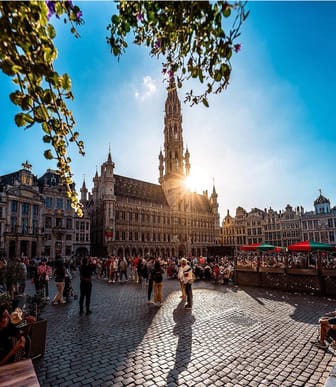Prague is definitely worth visiting. It is a beautiful city with rich history, stunning architecture, and cultural diversity. The city offers a range of activities, including sightseeing, exploring museums and galleries, enjoying the nightlife, and sampling delicious Czech cuisine. Additionally, Prague is a relatively affordable city, making it an attractive travel destination for budget-conscious travelers.
Souvenirs you can bring home:
Bohemian Glass (near Prague, there are five Czech glass and crystal factories that can be visited), Prague Garnet (this precious gemstone is a symbol of the city’s rich cultural heritage), Mucha Posters by Alfons Mucha, Beer Cosmetics, Wooden Toys, Marionette Puppets, Karlovy Vary Spa Wafers, Kafka Museum Souvenirs, Special Reading Material from Palac Knih Luxor, Czech porcelain, the Prague golem, something with Krtek - the little mole (a famous cartoon character).
When it comes to food, be sure to check:
- Kolachkes (Traditional Czech Cookies) are small, sweet, and perfect for snacking on while exploring the city; made from a rich, buttery dough that is rolled into small balls and then filled with a variety of sweet fillings such as fruit preserves, nutella or poppy seeds (and are often sprinkled with powdered sugar for an extra touch of sweetness)
- Trdelník, made from a dough composed of yeast, flour, sugar, and eggs, the seemingly gourmet treat is wrapped around a spit and grilled until crispy on the outside and soft on the inside. Traditionally coated in sugar and cinnamon for a sweet and aromatic flavor.
Beverages? Beer, Becherovka (Herbal Liquor), Absinthe.
Highlights:
🍺 Beer - The Czechs will tell you that their beer is the best in the world, and they ought to know. Per capita, the Czech Republic consumes more beer than any other country. Pilsner Urquell, the worldʼs first pilsner beer, is top of the line; Gambrinus, made at the same brewery, is also good. The dark Krušovice has a surprisingly light quality; Budvar is the original Budweiser; and Staropramen is the Czech Republicʼs proud working-class brew. Small brewery labels, like Bernard and Lobkowicz, are also worth trying. Czech beer is rated by degrees – 10 degree, 11 degree, 12 degree – with the alcohol content increasing as the numbers rise.
🗿The Golem - Prague golem is a legendary figure in the city’s history and has become a popular souvenir for visitors. The Golem is said to have been created in the early 19th century by a rabbi named Judah Loew, who used the creature to protect the Jewish people from persecution. According to legend, the golem was made of clay and was brought to life through a magical ritual; it quickly became known for its immense strength and loyalty to its creator, but its power was also feared. Eventually, the rabbi realized he needed to destroy the creature before it caused any harm.
Today, the golem is a symbol of Jewish heritage and the power of folklore.























